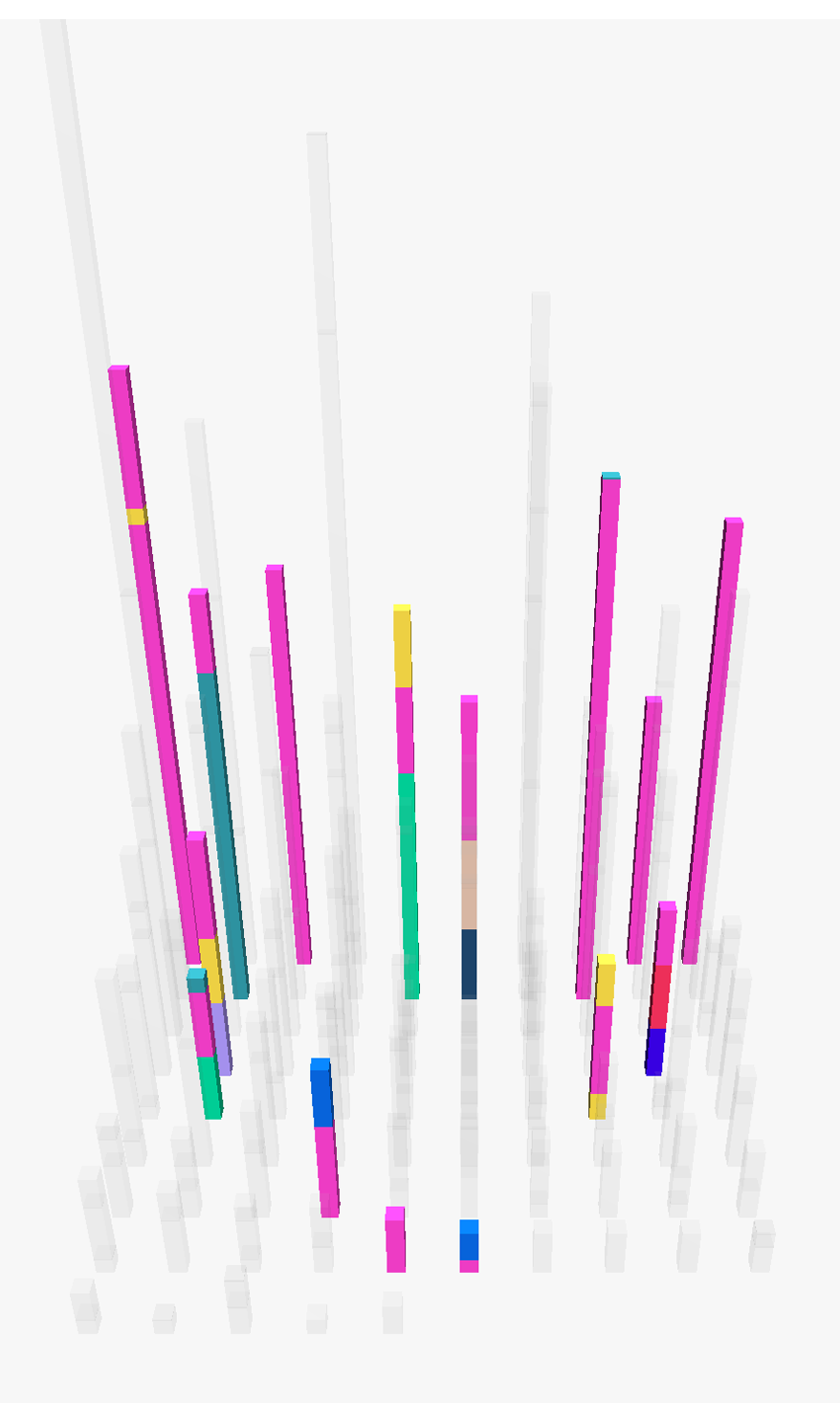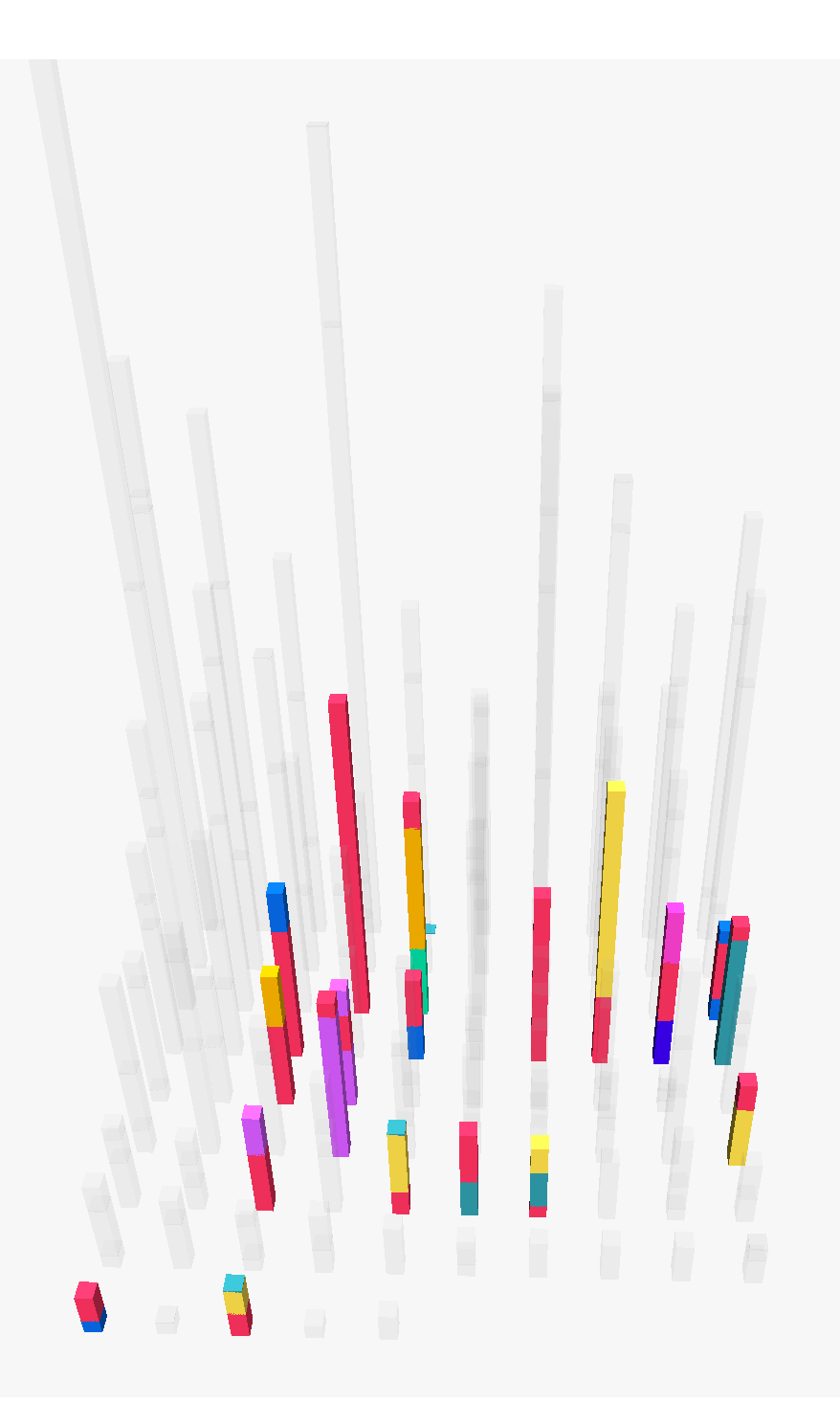ABOUT THE CENSUS
The value of design varies wildly depending on the company or organization, or even the industry.
Using data collected from alumni of the School of Design The CMU School of Design is one of the oldest and most respected programs on Design. Visit http://design.cmu.edu/for more information. at Carnegie Mellon CMU is a global research university. It challenges its students to utilize their curiosity and passion to imagine and create work that matters. , we visualize the various alignments and values of alumni compared to those of the companies and organizations that they have worked at.
Represented by a city of cubes (“Cubeville”) "Cubeville" is a famous exercise in Mark Baskinger's Freshman Drawing Course to teach students perpsective. , the data explores how alumni’s values of design align with their current and former workplaces. The alumni were asked to elaborate on how aligned, or misaligned their values were with the company in the role of the designer Aspects of the designer’s role include: degree of creative freedom, amount of collaboration, process of ideation, how work is executed, etc. , the methods Aspects of the design process methods include: level of empathy, amount of iteration, depth of experimentation, quality of user research, etc. in the design process, and the final designed product Aspects of the final designed product include values such as: bettering humanity, advancing technology or innovation, bettering the product or brand, causing delight or entertainment, etc. . Depending on their responses, they elaborated on what specific aspects in their values diverged.

RESEARCH QUESTIONS
Part 1: About the Alum
- When did you graduate from the School of Design?
- Were you a School of Design Undergraduate or Graduate student?
- In total, how many positions Survey respondents varied from 1-20 positions held. have you held since graduation?
Part 2: About the Positions
- How many years have you worked here?
- What industry Participants classified their positions into the following industries: Agency, Consulting, Tech, Business, Print/Publishing, Healthcare, Entertainment, Manufacturing, Nonprofit, Education, Finance, Government, Law, Retail, Transportation, Other. is/was your company/organization most closely associated with?
- From 1-5, how aligned are the company’s values of design to your own?
- If applicable, choose from the following list of area(s) where your values diverged: the role of the designer "What aspects of your role diverge from your idea of a designer? , the methods “What aspects of your industry’s values towards design thinking/process diverge from yours?” in the design process, the final designed product “How would you describe your industry’s values toward the products that you designed?” .




TAKEAWAYS
The CMU Design Census was sent to alumni currently living in CMU Design Census. We received 87 responses.
Takeaway #1
21% (18/87) overall were in the same industry for the past 3 jobs
Takeaway #2
43% (37/87) overall had increasingly aligned design values in each of their past 3 jobs
Takeaway #3
17% (15/87) overall were in 3 different industries for the past 3 jobs